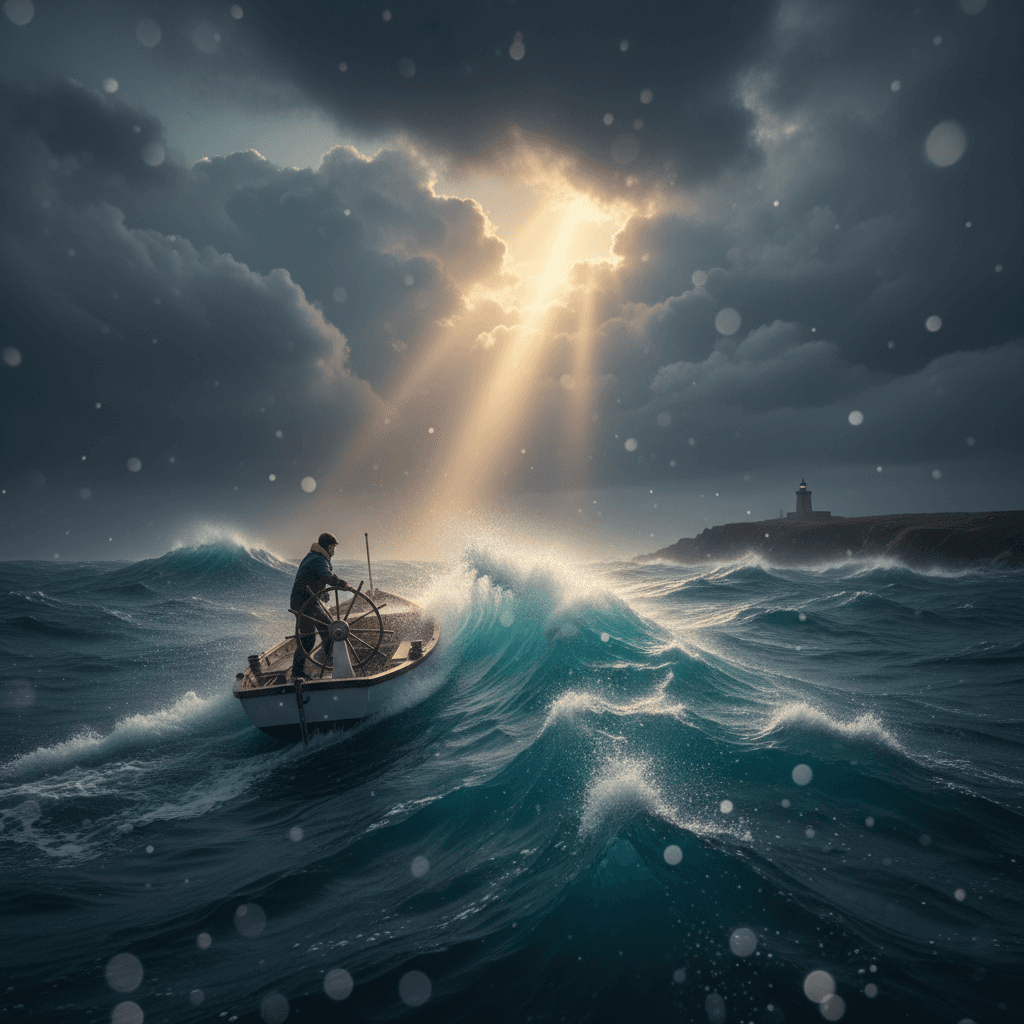Steering Through Storms: Skill Forged in Adversity

When storms arrive, practice steering; skill grows in adversity. — Søren Kierkegaard
From Wind and Waves to Will and Choice
To begin, Kierkegaard’s sea image distills his existential emphasis: we become selves by choosing under pressure. In *Either/Or* (1843) and *The Concept of Anxiety* (1844), he shows that anxiety—‘the dizziness of freedom’—can paralyze or propel. Steering amid storms means deciding while buffeted by uncertainty; the act of steering, not calm seas, forms character. From this vantage, adversity is not merely endured; it is the very medium in which will learns its craft.
Skill Grows Where Friction Lives
Building on this reframe, skill germinates where friction lives. Learning research identifies ‘desirable difficulties’—conditions that feel harder yet produce sturdier mastery (Robert Bjork, 1994). Spaced practice, varied contexts, and immediate feedback create the cognitive equivalent of choppy water that improves balance. In storms, every adjustment yields high-fidelity feedback, compressing learning cycles. Hence the paradox: we avoid hardship to feel efficient, but we need calibrated strain to become effective. This logic turns adversity from foe into instructor.
Beyond Resilience: Antifragility and Grit
Moreover, modern frameworks deepen Kierkegaard’s claim. Nassim Nicholas Taleb’s *Antifragile* (2012) describes systems that gain from shocks, not just withstand them. Complementing this, Angela Duckworth’s *Grit* (2016) shows that sustained passion and perseverance convert rough conditions into cumulative advantage. Together they suggest a two-part engine: perturbations supply information, while character sustains engagement long enough to metabolize it. Thus the storm provides signal; the helmsman’s grit translates it into skill. History shows how this coupling plays out in real decisions.
History’s Sea Trials and Quiet Mastery
History echoes the point with vivid seas and steady hands. During Shackleton’s Endurance expedition (1914–1917), Frank Worsley navigated an open boat through subantarctic storms using scant sextant sightings, turning chaos into course corrections that reached South Georgia. At Trafalgar (1805), Admiral Nelson exploited high winds and close quarters to ‘break the line,’ converting hazard into tactical advantage. Such episodes dramatize a pattern: mastery is not rote execution but situation-sensitive steering. The storm does not suspend skill; it reveals and refines it. This raises an ethical caution about courage.
Courage Without Recklessness
Consequently, practicing steering in tempests must avoid bravado. Stoic writers like Seneca in *On Providence* (c. 62 CE) argue that trials train virtue, while Epictetus urges focusing on what is within control. Kierkegaard similarly insists on earnest, accountable choice rather than theatrical daring; the goal is formation, not spectacle. Courage calibrates risk to purpose, seeking exposure sufficient to learn yet not to court ruin. In this light, skill grows in adversity when humility sets the limits and reflection turns experience into wisdom.
Turning Adversity Into a Training Ground
Translating principle into practice, we can let adversity teach without waiting for catastrophe. Stress inoculation training (Donald Meichenbaum, 1985) builds tolerance through graduated challenges and debriefs. Implementation intentions—if–then plans—prepare the helm before squalls arrive (Peter Gollwitzer, 1999). Simulations with pause-and-learn cycles and rigorous after-action reviews (popularized by the U.S. Army) convert turbulence into lessons while memory is fresh. Small, frequent exposures—cold calls, time-boxed decisions, role-played crises—create controlled chop that rehearses steering. Scaled up, these habits become culture.
Educating and Leading for Storm Readiness
Finally, institutions can normalize difficulty as a crucible for growth. A growth mindset frames setbacks as information (Carol Dweck, 2006), while psychological safety ensures people risk speaking and deciding under pressure (Amy Edmondson, 1999). Checklists and briefings—practices championed in Atul Gawande’s *The Checklist Manifesto* (2009)—act as guardrails so teams can take smart risks. Leaders who pre-frame upheaval as a mission, not a crisis, help others keep a hand on the tiller. In this way, when storms arrive, practice steering—because skill, like a true helmsman, is made at sea.